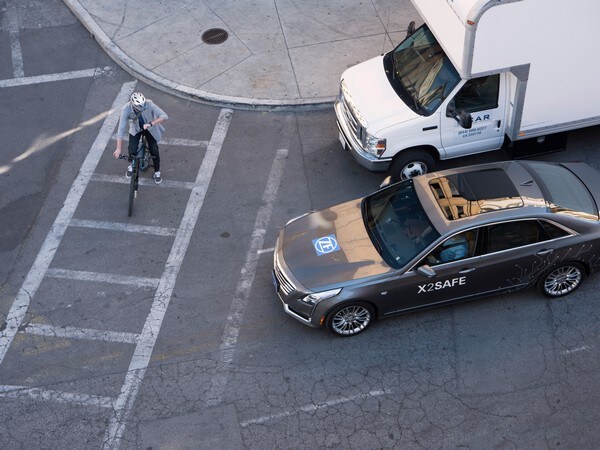
German supplier ZF says it has developed a cloud-based algorithm that will allow vehicles, infrastructure and even pedestrians, cyclists and motorcyclists with smartphones to communicate with each other thereby reducing the potential for accidents. Called X2Safe, the program is designed to work with car-to-car, car-to-infrastructure and even people-to-people via smartphone applications.
According to ZF, pedestrians, cycles and motorcyclists are particularly at risk on today’s roads and are involved at about half of the 1.25 million deaths caused by traffic accidents worldwide. The ZF algorithm provides a means for this linked-in technology to communicate to all who share the road and could pave the way for quick adoption of autonomous or self-driven vehicles.
Warnings and active intervention
This advanced algorithm has the capability to individually detect the behavior of all road users and in turn can provide warnings of unsafe situations and can go as far as to actively intervene to prevent collisions. As envisioned by ZF, the warnings would be sent to drivers in cars as well as to pedestrians for cyclists through smartphones or smartwatches. The program can also be adapted to integrate with vehicle safety systems like automatic braking to avoid an accident. The ZF algorithm also has the ability to process road-user information as well as assess potential danger zones, such as roads with poor visibility or bus stops.
Also: Kelley Blue Book Best Buy Awards
“Safety is the heart of autonomous driving,” explained Malgorzata Wiklinska, head of ZF’s think tank in charge of developing the algorithm. “Our technology could soon help benefit all road users.”
ZF also is developing mechanical components that can sense the environment in which they operate as part of an overarching philosophy that the supplier calls See—Think—Act which will lead to complete systems that make vehicles and other road users aware of each other’s presence. The X2Safe intelligent networking of data and mechanics means that vehicles will not only be able to detect potential dangers, but also be able to make split-second decisions to avoid accidents.









